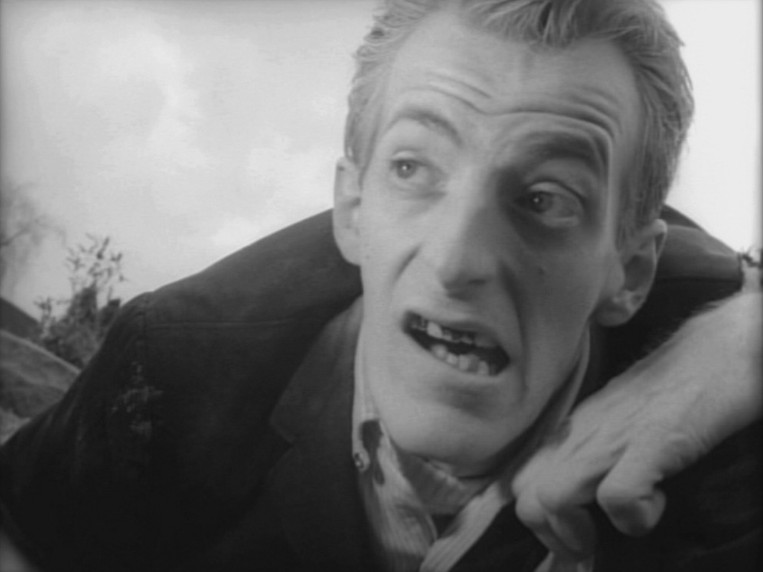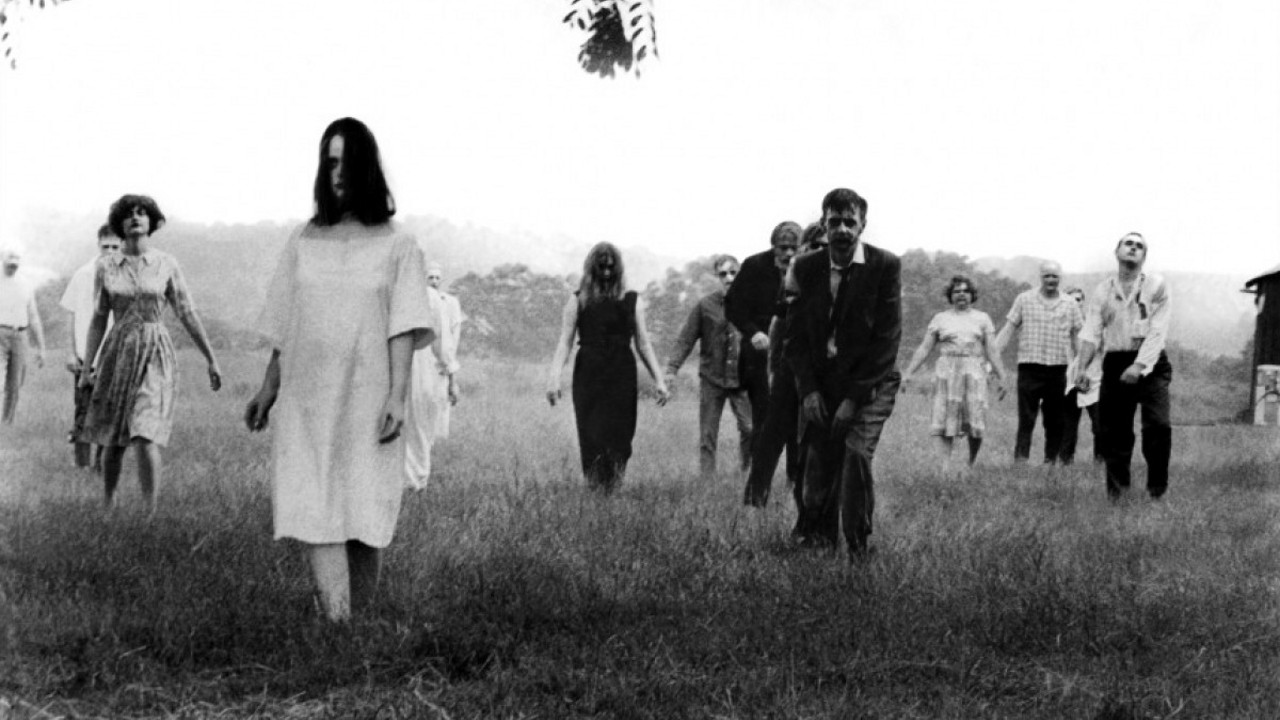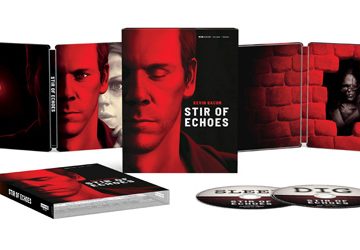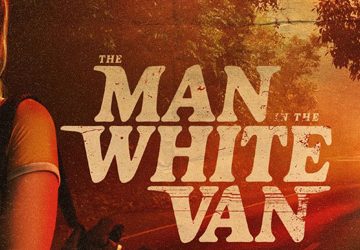“They’re coming to get you, Barbra!” Audiences had no idea how true these words would be when this line was first spoken almost fifty years ago. This week in Horror movie history, Night of the Living Dead, one of the most influential films of the past century, was released on October 1, 1968, through Image Ten, Laurel Group, and Market Square Productions. Director George A. Romero turned the Horror genre on its ear with Night of the Living Dead, breaking unspoken rules that had been followed not only in genre films, but in movie-making in general – that the good guy always wins, the bad guy is always defeated, and that life as they knew it could continue for characters once the credits rolled. After the debut of Night of the Living Dead, though, all bets were off.

Many members of Romero’s cast had never acted before, including Duane Jones, Judith O’Dea, Keith Wayne, Judith Ridley, Kyra Schon, and Schon’s real-life father, Karl Hardman, although Marilyn Eastman had a previous bit part in the Perry Mason TV series. Local celebrity Bill “Chilly Billy” Cardille was asked to play the television news reporter. Ten years later, Cardille’s daughter, Lori, would play Sarah in the film’s sequel, Dawn of the Dead (1978). Along with acting, Hardman also co-produced the film and helped out in makeup along with co-star Marilyn Eastman. The two went on to form Hardman/Eastman, Inc. where they, together with co-producer Russell Streiner and scriptwriter John A. Russo, created the satirical Return of the Living Dead in 1985. Tom Savini had originally been called in to take care of the special effects but was called to duty by the US Army to serve as a combat photographer in Vietnam, so that job was passed on to Tony Patanella and Regis Survinski. Both Patanella and Survinski were fresh off the boat themselves, and they went about the task before them with no preconceived notions on how to create an army of the undead, a fact that let them think outside the box whether they wanted to or not.
Mostly filmed in rural Pennsylvania, Night of the Living Dead is horrific in its simplicity. The film is bare-bones cinema, and that is what makes it so relatable. It was shot with a paltry budget of $114,000 on grainy 35mm black and white film stock. There are no extra scenes, melodramatic moments, or outlandish effects. By using inexperienced actors and unknown faces, Romero was able to pull off the feeling that the characters in the movie were indeed real people, someone one might come across working at their local bank or teaching at the high school. It could have been anyone up on the screen, and since “anyone” can include members of that very audience, one cannot help but feel that they are merely a step or two away from dealing with undead ghouls themselves. The small cast and tight plot only made the film that much more unrelenting.

Not to say that corners were not cut. The cheaper film stock and newbie actors did a lot to give Night of the Living Dead its raw, grainy feel, but there was another reason behind Romero’s choices – they were cheaper. Since color did not matter, Patanella and Survinski used a cooked pig body colored in chocolate sauce to portray the dead, burnt-out couple in the truck, giving the undead actors something theoretically edible although not exactly tasty. Crew members let Romero use their cars and even stood in as zombies from time to time. The house that the movie was filmed in was owned by a friend of the director, and since he had planned to demolish it once filming was over, he did not care what they did to his building.
Night of the Living Dead was produced before the MPAA was put into effect, so theaters were filled with little children expecting to see a fun Horror along the lines of “Attack of the Crab Monsters” or “Creature from the Black Lagoon.” With no nudity, the film was approved for general audiences, so kids as young as six or seven were dropped off at the theater with the $.40 admission fee and left to watch on their own. Needless to say, these kids were stunned into submission after seeing ghouls actually snacking on human flesh, two teens burn to death, a little girl killing her mother and cannibalizing her father, as well as the hero of the movie actually dying. In the following decade, those same kids grew up ready to revel in movies such as The Exorcist (1973), The Texas Chain Saw Massacre (1974), Black Christmas (1974), Jaws (1975), Carrie (1976), The Omen (1976), and Alien (1979), movies that paved the way for another new sub-genre called Slasher. As one of the last movies ever to hit US theaters without an MPAA rating, many wandered into the theater naively looking for light, Saturday afternoon fare, and left later that day as newly minted Horror fans.

There were two scenes that were deleted from the final film at the insistence of distributor Walter Reade Organization. This footage was unfortunately lost in a flood years later at the storage facility at Latent Image, Inc. One included a six-minute conversation between Helen and Harry in the basement and the other was a wide shot of a horde of undead covering the landscape. In 2013, Romero, Russell Streiner, and John A. Russo executively produced a stage adaptation of the film, which debuted in Toronto. The play featured the story of the original film, followed by a series of alternate scenarios. The well-known racial tensions in the film were actually unintentional according to Romero, who cast Jones because of his talent as an actor rather than the fact that he was African-American. Ironically, while driving through New York to find the film a distributor on the night of April 4th, 1968, Romero and Russo heard the news on the radio that Martin Luther King Jr. had been assassinated.
The word “zombie” is never mentioned in Night of the Living Dead. The creatures that attack Barbra and Johnny Blair in the cemetery are called “ghouls” and “those things” throughout the film. This, of course, did not stop both fans and critics alike from renaming those undead monsters “zombies,” a word that has stuck like a bone in the populace’s collective throats, even now, almost half a century later. “Zombie” has even become its own sub-genre of Horror films, right alongside Creature Features and Ghost Stories. Not surprisingly, the National Association of Theater Owners voted Night of the Living Dead the Exploitation Picture of the Month back in ’68. The critics over at Rotten Tomatoes know a gem when they see one and have given the film a 96% fresh rating, a near-perfect score, while the people behind Bravo’s 100 Scariest Movie Moments (2004) set Night of the Living Dead firmly in at #9. One would expect no less from such an influential, timely film.






Have autographed pictures of tony pantanella night of living dead want o sell